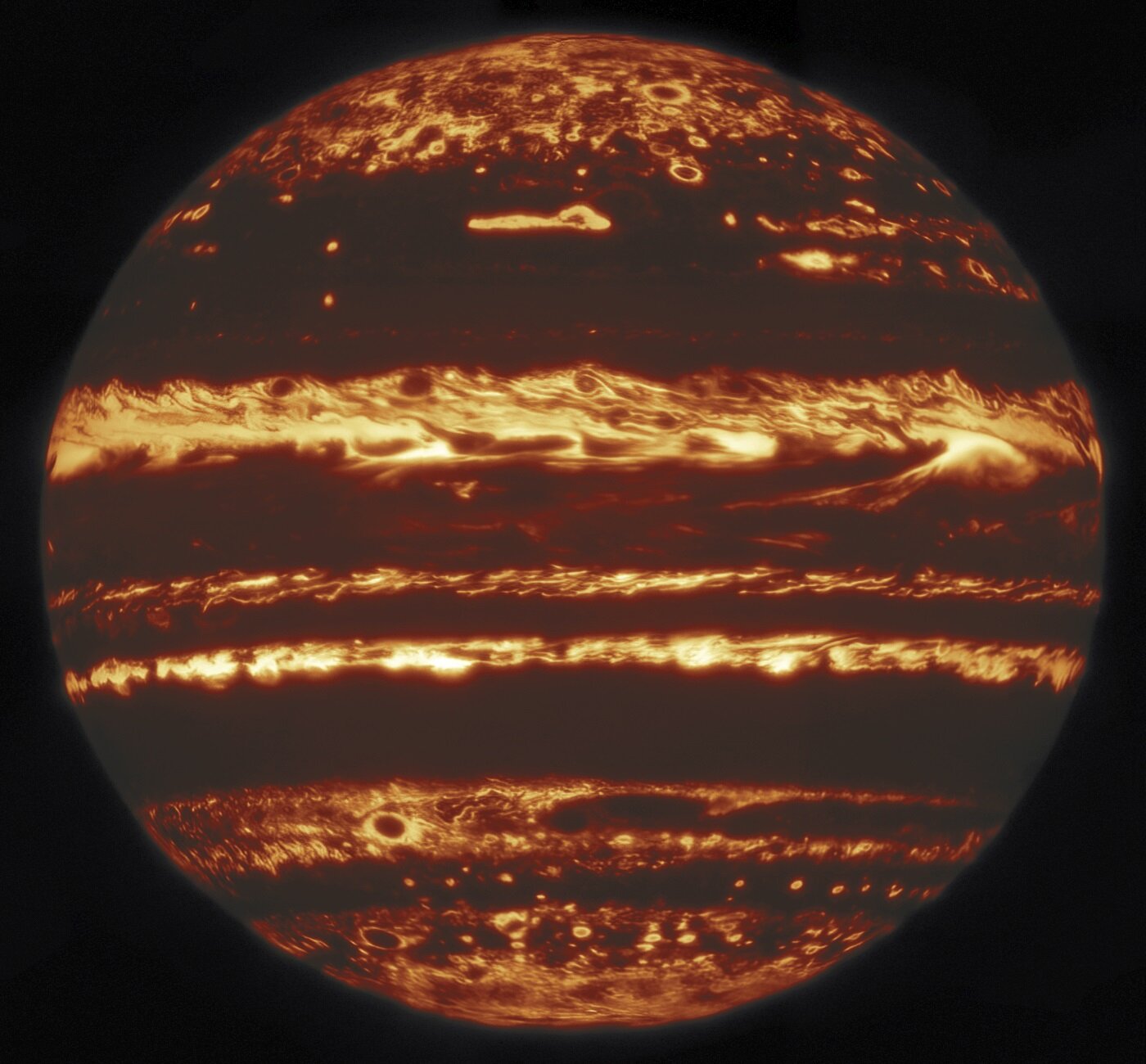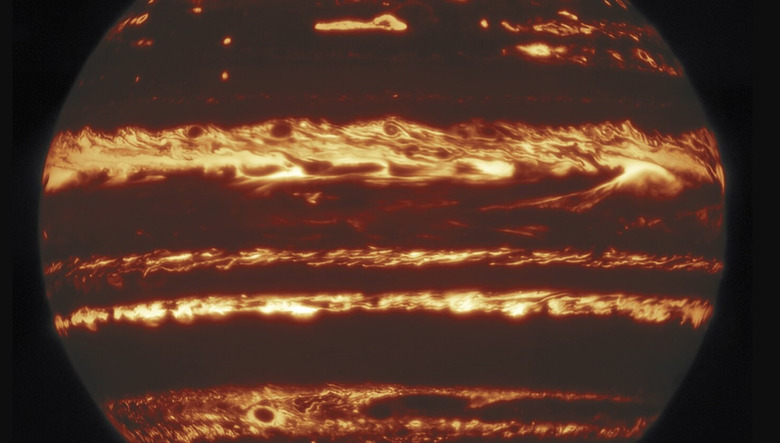Astronomers Capture Breathtaking 'Lucky' Image Of Jupiter's Raging Storms
- Using the infrared imaging capabilities of the Gemini North telescope in Hawaii, astronomers have produced one of the most detailed images of Jupiter ever captured from Earth.
- Infrared imaging cuts through the cloud tops and reveals the detailed structures below, helping scientists to better understand the forces that power the planet's swirling storms.
- Visit BGR's homepage for more stories.
As the largest and one of the most iconic planets in our solar system, Jupiter has been a target of observation countless times over the years. Despite that, every once in a while we're treated to a new look at the gas giant that reminds us just how ridiculously awesome it really is.
The latest image to accomplish that feat comes from a team of researchers using the Gemini North telescope in Hawaii. The capture is an incredibly rare treat, and it's an unusually high-resolution image considering it was snapped from the ground. It's also quite special thanks to the fact that it was shot in infrared, which can cut through Jupiter's wispy, swirling cloud tops to reveal what's going on below.
The Gemini Observatory has been studying Jupiter for years now, but it's not always easy. In fact, capturing a decent image of the gas giant from a telescope on Earth requires quite a bit of luck. The researchers even coined the term "lucky imaging" to describe the technique they use to get a clear picture.
"The Gemini data were critical because they allowed us to probe deeply into Jupiter's clouds on a regular schedule," Michael Wong of UC Berkeley, lead author of a new research paper published in The Astrophysical Journal, said in a statement. "We used a very powerful technique called lucky imaging. These images rival the view from space."

The lucky imaging technique uses a scattershot approach, snapping a whole bunch of images in rapid succession. The images are shot with very short exposure, so the scientists have to combine them in order to get a useful glimpse of the planet. The benefit of this technique is that the researchers can toss out any images that aren't as sharp as the rest, and the end result is a crystal clear picture with very little interference from Earth's atmosphere.
"NIRI at Gemini North is the most effective way for the US and the international Gemini partnership investigators to get detailed maps of Jupiter at this wavelength," Wong says. "At this resolution, the telescope could resolve the two headlights of a car in Miami, seen from New York City."
Observations like this are helping scientists explain the forces at work in Jupiter's colossal storms. The gas giant remains one of the most mysterious planets in our neighborhood, but we're slowly unraveling its mysteries.
